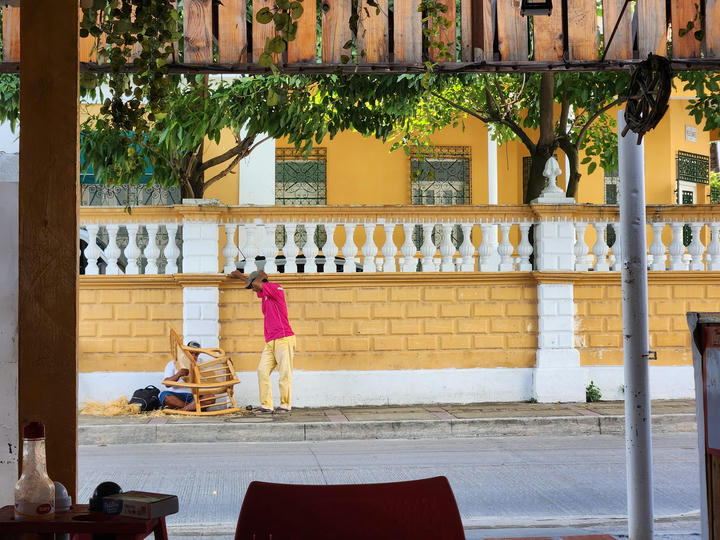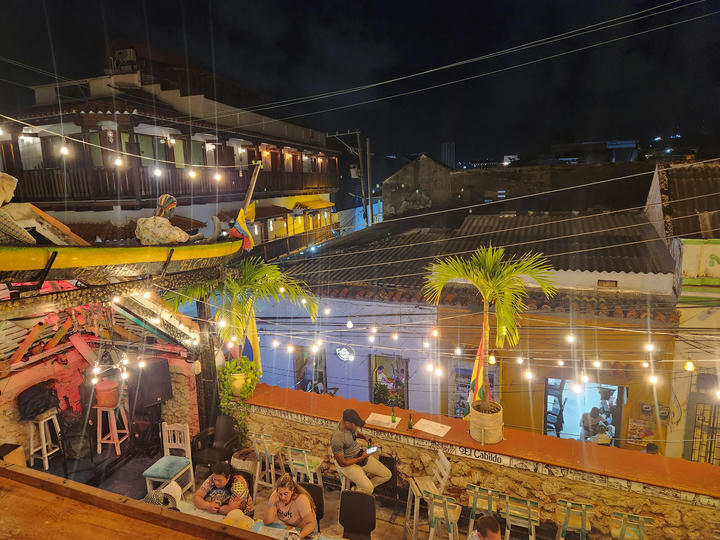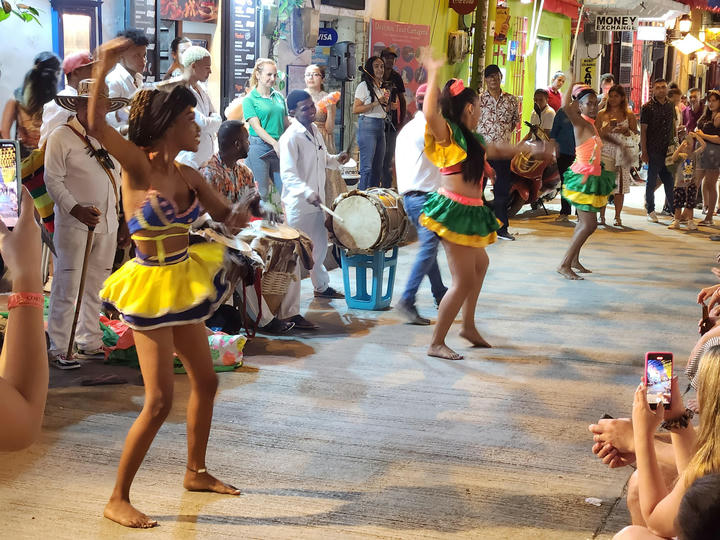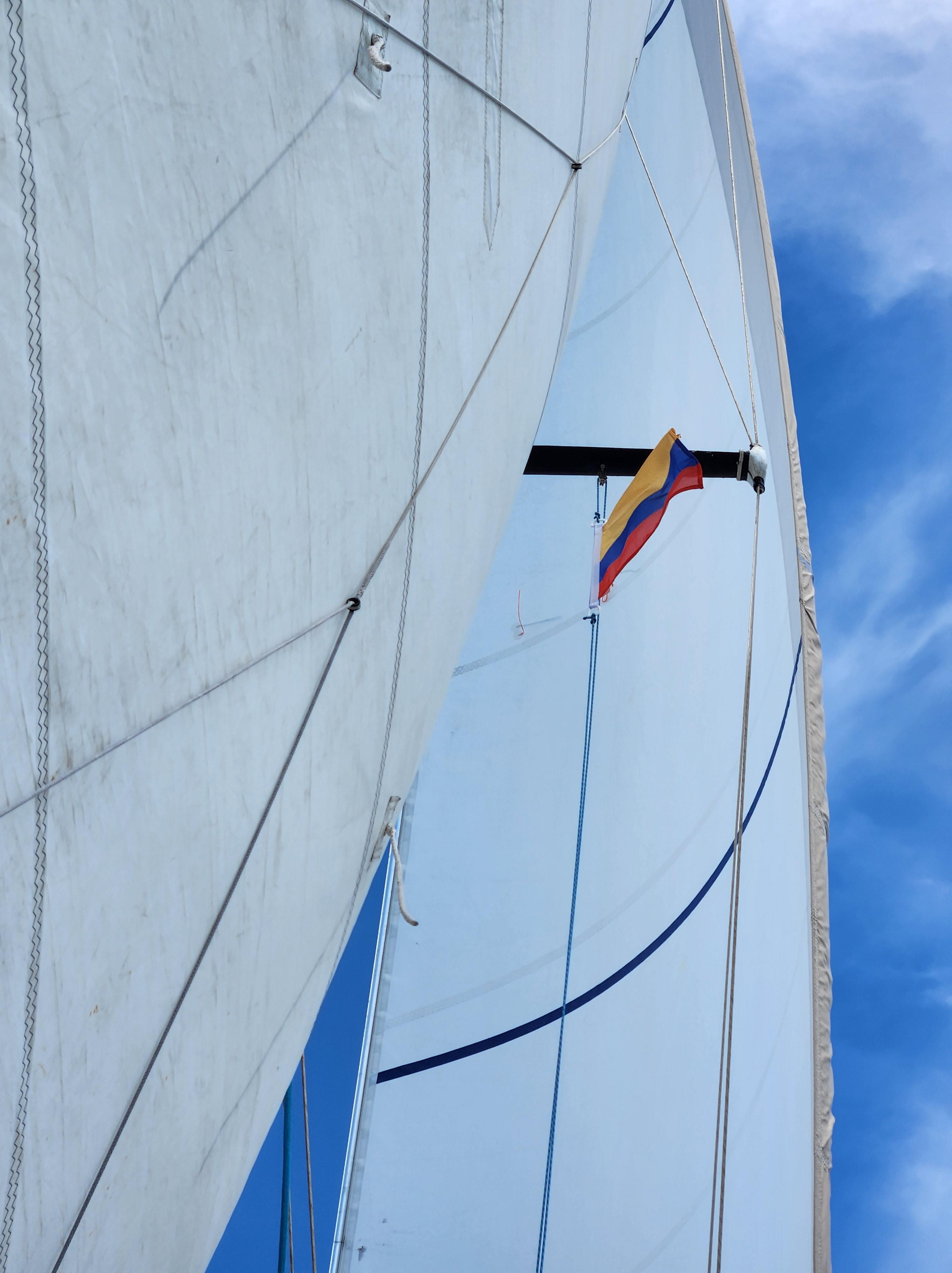Looking back, I think we loved Colombia. People were friendly, helpful and curious in general. The historic town of Cartagena was marvelous of colors and history, the rest of the town, like the marina neighborhood, vivid with activities and the part we only saw through the car window seemed like yet another world of its own.
Cartagena is a large populated town. It's hot most of the year except in winter when, from what we heard, the tradewinds refresh the city a little. The traffic is wild with the roads governed by honking (for literally everything) and taken over by motorbikes with one or two people, with or without helmets. Clearly pedestrians don't have right of way and apparently, the way to take a taxi is by being a bike passenger, which explains why so many bike drivers honked at us passing by - something which took us a while to understand. We never tried though as we were always two people and as it honestly seemed a little dangerous. People speak extremely fast in Cartagena and apparently you can tell where in the city people are from by their local accent. We, of course, didn't get any of this but were grateful at taxi drivers making an effort to speak slower for us to understand. We didn't manage to figure out the way addresses work, which turned out to be a challenge with the taxis sometimes. Google was spitting us a combination of numbers followed by a transverse or diagonal as street name that no one seemed to understand. Conversely, taxi drivers were mentioning street names we never saw written anywhere.
Luckily, we knew a good way to describe the location of Manzanillo marina club where we stayed. La postobon was the industrial warehouse of sodas and drinks that everyone knew about and it was only two blocks away from the marina. Like any place in Colombia, the marina was guarded by alert defensive dogs. They were mostly suffering from the heat during the day, but transformed at night, guarding the docks ferociously. After a few weeks, they got a little used to us except the owner's dog Foucho, who despite its small size was still barking at us aggressively. Once, Yalçın tamed him by tossing chicken wing leftover bones which worked better than expected. The gang of dogs was composed of Foucho, Nutella, a tall female hunting dog interested in food and hug - easily corruptible, a little white dog with a black head who was relentless when in company of Foucho. My favorite was Kiki, a female dog we mixed with Foucho for our first weeks and which we found inside the boat one night when we were asleep. When she saw she was discovered, she tried to panick-climb the companion way ladder back to where she came from but was unsuccessful. She rolled up in the galley with a sad look. Still unsure if it was aggressive Foucho and how the dog would respond to Yalcin taking it out, we were a little panicked too. But she let herself been carried out outside and walk the plank back to the dock after looking back at us. From that night, I grew more worried the dog nails we would sometimes hear on the deck would become an angry Foucho falling on us through the open hatch and we tried to close the dog path with lines. Later, we would wish for Kiki to come back visit us but she never did. She was the cutest dog!
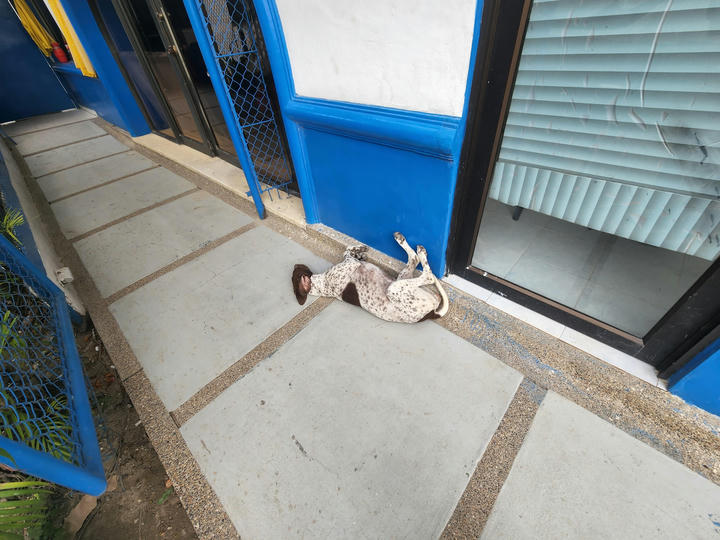
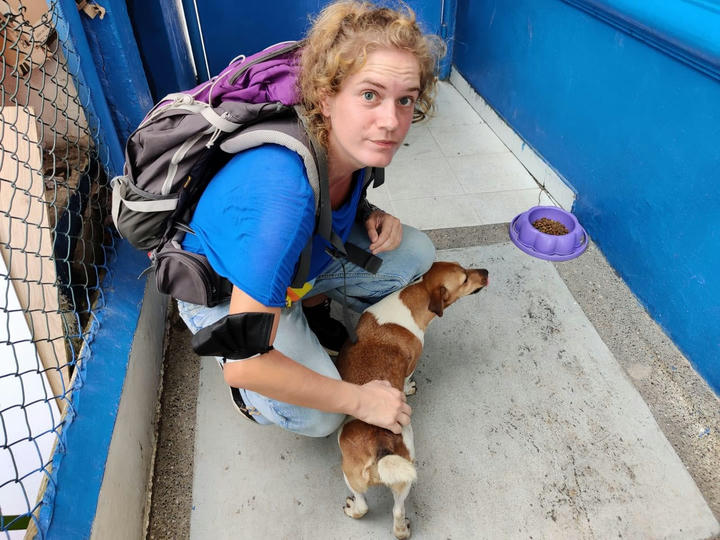
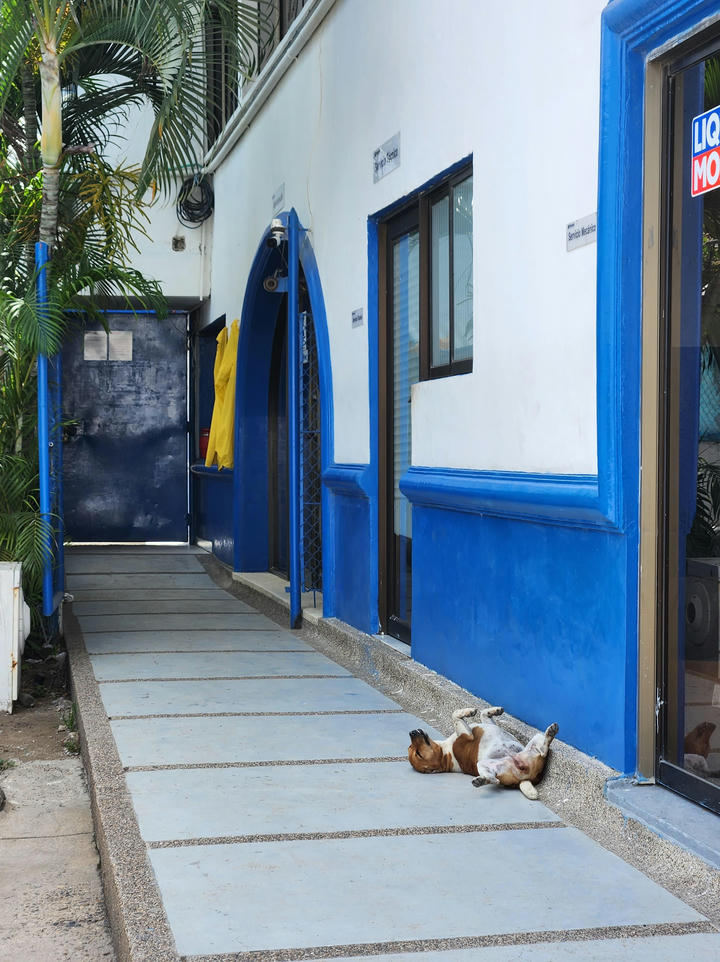
A few cruising boats were put in Manzanillo marina for some boatwork or to wait out the hurricane season in safe Cartagena. We first met a British couple living in British Columbia, Canada, when not on the boat. Our neighbors on both sides - they owned the two catamarans we were in between - was a Danish couple, welcoming groups of mostly Danish people on a sabatical. Their guests were sharing their sailing daily life for a few months at the time. They had gotten the second boat in Aruba and were refitting it here: engine, solid shade with solar panels, deck, interior... a dozen workers were on their boat every day. The sailing stars from the YouTube channel Zingaro had their boat here too. Ana launched a party for James's 42nd birthday where the whole marina workers attended. A chance for us to learn more about Maurice Lemaître, the manager of the marina. With such a name, you may think he was French - so did we - but not at all. Lemaître is indeed a French name but the immigration of the Lemaître family goes back 5 generations in Cartagena and gave its name to many businesses and even streets in the city. Maurice was speaking both English and French though as he had attended hotel school in Switzerland. He explained to us the story of the business his dad had created, how when he was a kid and there was still a lot of corruption in this part of Colombia, they went to live in Panama, how he started a kite surf business at the entrance of the canal and what he thought were the main differences between the two countries. He told us about the large Middle Eastern immigration in the region which explained the kebab or labne foods we could commonly find. Maurice was of course also instrumental in coordinating with the workers during our work. The cruisers bound never grew very strong in the marina but we ended up a little sad to leave nonetheless. With the staff of the marina, Rafa the dockmaster, the girls in the office, the three nightguards, the doormen, they had slowly become part of our Cartagena family.
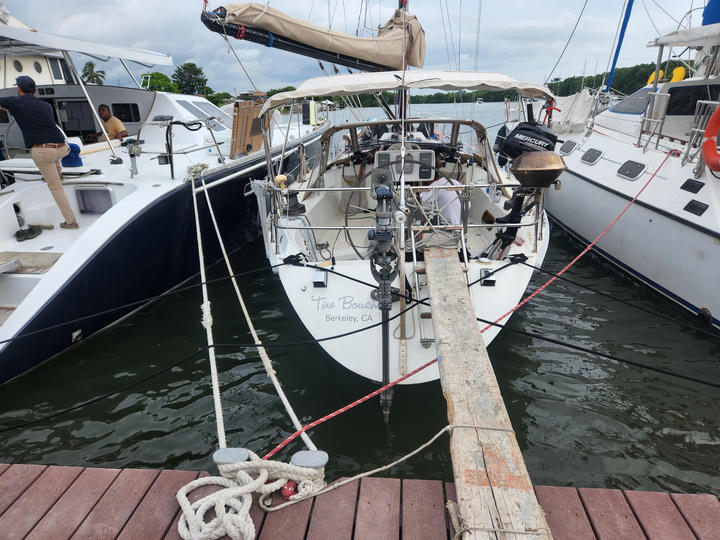
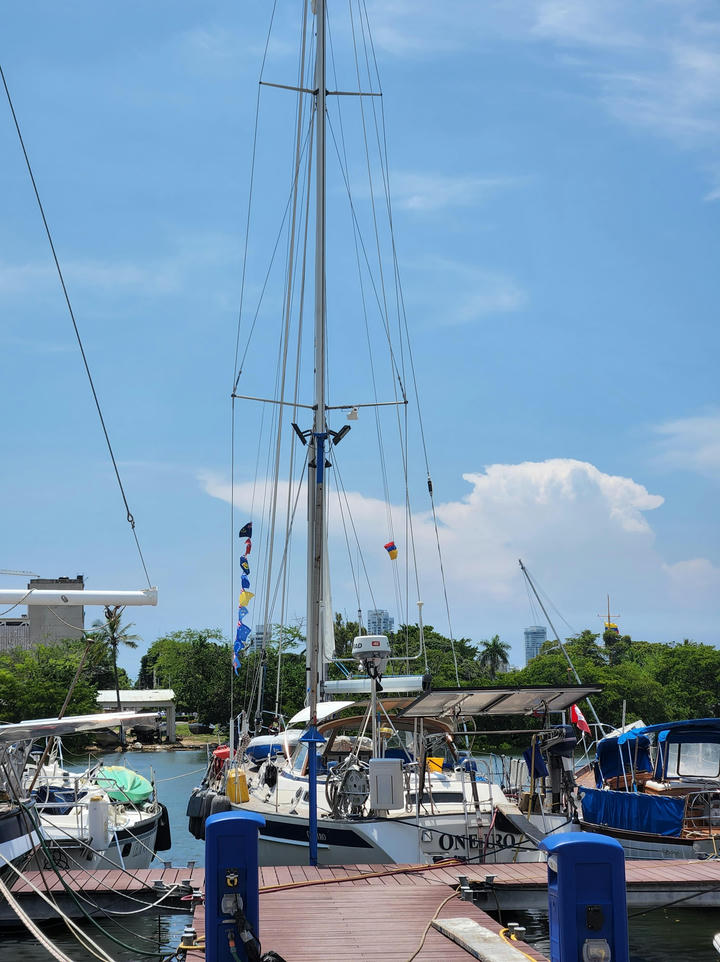
We also liked the availability of parts and the ease of provisioning which turned out really cheap, prompting us to stock up on food that would soon become expensive in the Caribbean islands.
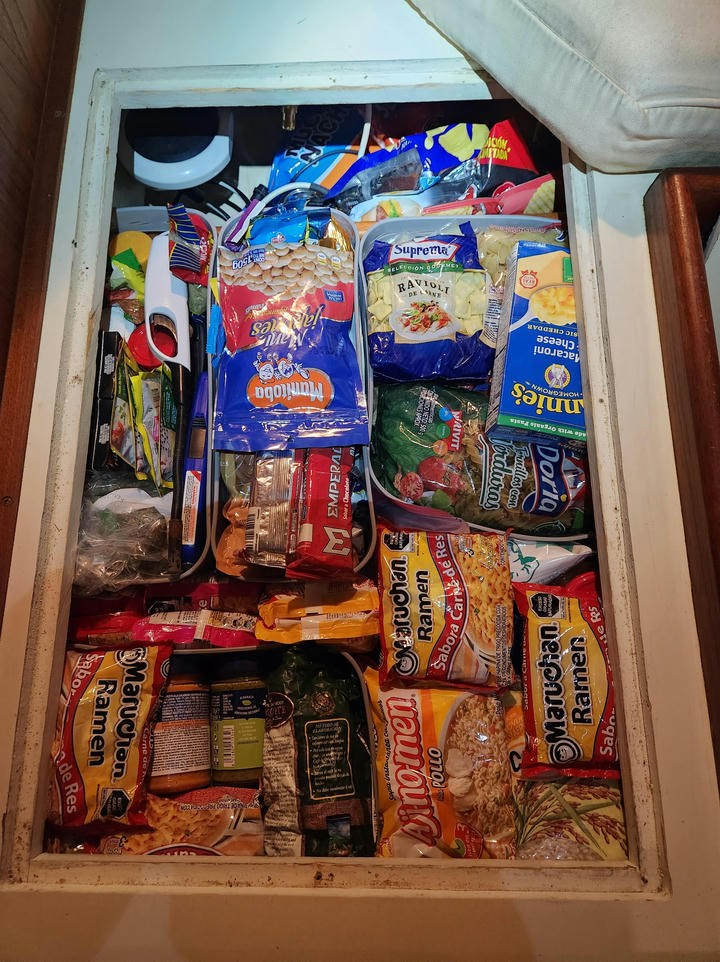
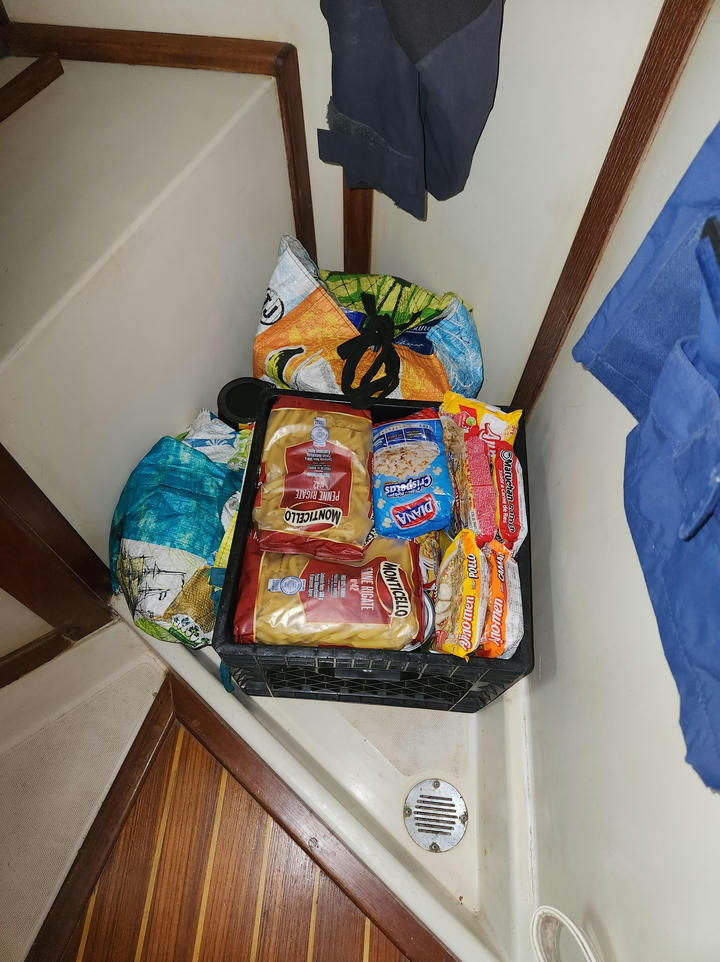
There are a few things we didn't like though, to give you the complete picture. When working with people, there was often a bitter after-taste: a taxi driver which is fairly priced and friendly but tried to sell you a 200 dollar tour at the end, the fittings on our dodger which rusted and stained the new canvas after our first sail because it's not the good material, the marks of putty in many places on the deck after the deckwork... The most bitter of all was the check-in check-out process. First of all, it was extremely expensive: around 300 dollars in Cartagena as you are required to hire an agent. We never saw David, the agent we had chosen because he spoke English. Instead, everything went through his secretary, Nicole, who spoke less English than my Spanish. It ended up being difficult to communicate and I'm still not sure if we ever really got a proper cruising permit. She made us wait for her in the boat for entire mornings and was surprised when we were not there still waiting in the afternoon. The worst was when upon departure she failed to put the proper date and proper crewlist on the exit Zarpe and asked us to pay the taxi to immigration, in which she had invited a random dude (her friend probably) for a free ride, which wasn't in the contract. A pretty bad and expensive system! Cheery on the cake, you are supposed to hire an agent for every new province you check-in, namely every city on the Caribbean coast, and fees don't seem to get much cheaper if the international entry has already been done. Because of that, we believe that despite being a cheap country, Colombia can easily add up to be an expensive cruising destination and we are glad we explored Santa-Marta by land. Yet, since Mexico, it's the country we think we liked the most for the authenticity of its people and the diversity of its economy and culture (many things produced or made in Colombia which was great for boat parts but also for immersing yourself in the culture), and we'll for sure miss it.
